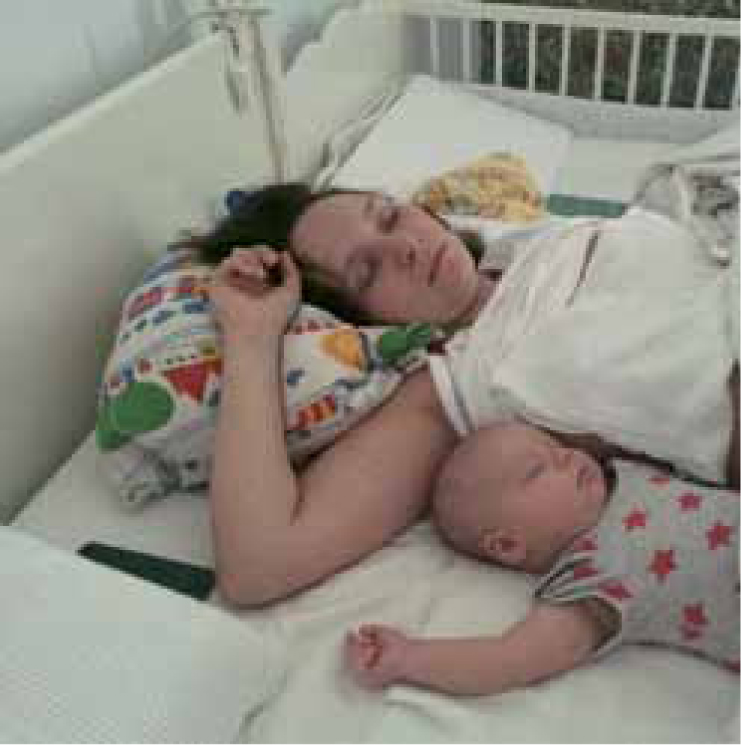Three days after my child was born, we were transferred to the baby unit. My child was poorly and I was uncertain what was going to happen. During that time, every cell in my body was telling me to keep him close to me. I knew, while poorly, the best place for him is next to me, even during the night. Bed sharing in a hospital? Not easy. Paediatricians and nursing staff constantly warned us of the dangers of sudden infant death syndrome (SIDS) and other risks related to co-sleeping. But why should I deny myself to sleep with my child when all my maternal instincts were screaming for it? Yet hospital policy dictated that he spend most of his hours tucked up in a plastic cot.
Where did babies sleep 100 000 years ago? No doubt they slept with their mother in order to survive—with close physical contact, she could provide the infant with needed warmth, nutrition and protection. In fact, babies have been sharing their mother's sleep space throughout time and continue to do so in many Western countries despite the controversy and opposition from medical authorities. From a study of 27 societies, it was found that in 24 of the cultures, many infants slept with the mother—only three did not bed-share (McKenna, 1986).
Some data suggests that co-sleeping can actually reduce the risk, in certain circumstances at least. For example, SIDS is very rare in Japan, where co-sleeping is most widespread (Gonzalez, 2012). Furthermore, in laboratory studies, babies who sleep with their mothers sleep less deeply, which is thought to be a possible advantage (Mosko et al, 1997). However, an individual level analysis of five major case-control studies (Carpernter et al, 2013) found that bed sharing in itself poses a risk to infants. These findings, however, should be read with a degree of caution as three of these studies collected data on maternal alcohol use in the last 24 hours but illegal drug use was not recorded. Additionally, the authors did not present data related to feeding the baby at night on the sofa or an armchair. Therefore, clear conclusions on bed sharing cannot be drawn.
Many experts are quick to remind the mother of the alleged dangers of bed sharing, while failing to acknowledge the benefits associated with it. No mention is made about the intimate biological connection between breastfeeding and forms of co-sleeping and how infant proximity and contact sustained by co-sleeping saves infant lives and is fundamental to human life (McKenna and McDade, 2005). Alongside thermal and cardiac synchronicity, oxytocin responses, immune function, colonisation with the mother's friendly bacteria and comfort for a baby, all mentioned in the cochrane review (Anderson et al, 2003), recent studies have shown that bed sharing is associated with longer breastfeeding (Ball, 2003), and breastfeeding mothers get more sleep when they co-sleep with their babies (Quillin and Glenn, 2004).
Perhaps moving away from the notion that a single recommendation is appropriate, we should investigate recent evidence related to bed sharing and ask ourselves whether bed sharing actually exacerbates or is protective against the occurrence of SIDS, whether the practice facilities breastfeeding and whether bed sharing is beneficial for an infant's development. Advice for, or against, bed sharing must have a strong evidence-base and must include the idea that bed sharing can be one of several choices, especially where parents are provided with supportive education on how to make that choice and how to practice that choice safely.
 Paulina and her son co-sleeping
Paulina and her son co-sleeping

